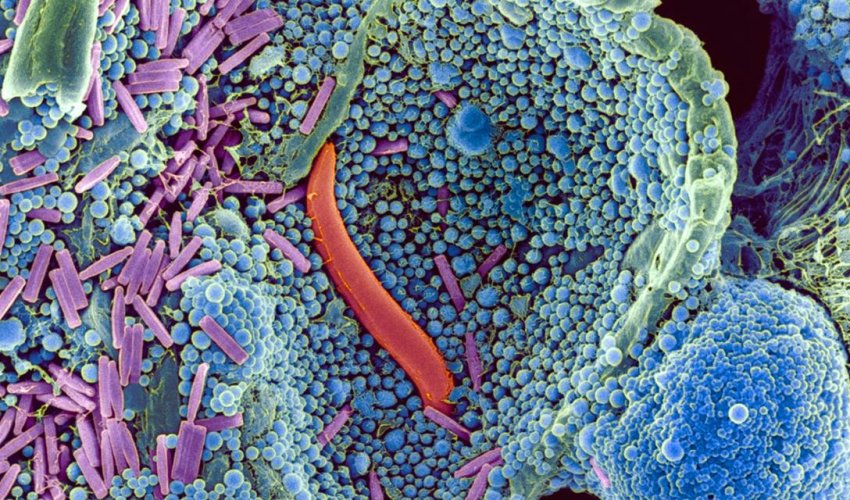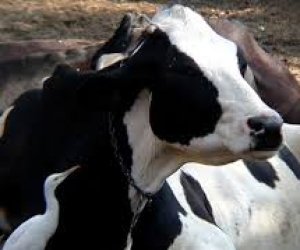One amazing substance allowed life to thrive on land

Mud. Muck. Dirt. Although we have plenty of words for it, we rarely give soil a second thought. But without soil, we would certainly be dead.
Soil is crucial to almost every aspect of life on land, from water storage and filtration to climate regulation, flood prevention, nutrient cycling and decomposition. The dirt beneath our feet is also an exceptionally high source of biodiversity: some estimates suggest that at least one quarter of all species live in or on the soil. And we are still discovering its treasures: in January 2015, scientists announced that the first new antibiotic in 30 years had been found in soil bacteria.
"Soil biodiversity is largely unseen but is crucial for healthy ecosystems, and ultimately healthy humans,” say Tandra Fraser and Diana Wall from the Global Soil Biodiversity Initiative.
The UN has named 2015 the Year of Soils and 5 December also happens to be World Soil Day. If there was ever a time to celebrate this underappreciated substance, it is now. But where did soil come from originally, and why is it so fundamental to life on land?
At the birth of the solar system, before our planet formed, the building blocks of soil were lurking in the inky blackness of space. Evidence for this comes from meteorites known as carbonaceous chondrites that date from the dawn of the solar system and that are rich in the clay minerals that made up the earliest terrestrial soils.
Following the formation of Earth, about 4.6 billion years ago, these clay-rich primeval soils developed across our young planet. But conditions were harsh: frequent and massive meteor impacts would have melted and pulverised large volumes of these early as quickly as they formed.
"There is debate about whether the whole surface of the Earth was melted,” explains Gregory Retallack, an expert in ancient soils from the University of Oregon in Eugene, US. He supports the theory that no more than half of Earth was molten at any one time.
Around 3.8 billion years ago, conditions on Earth began to stabilise. The constant meteorite bombardment that had made the planet an inferno until that point began to subside, and liquid water could condense, forming lakes and seas. This marked an important point in the soil story. The liquid water weathered and eroded Earth’s rocky crust, generating mineral matter and forming more permanent soils.
The first life on Earth probably appeared a little later, about 3.5 billion years ago; some of the earliest evidence comes from fossilised structures that formed on rocky shores and resemble microbial mats called stromatolites, which are still found on Earth today.
Almost from the moment of its origin, life began to influence – and be influenced by – soil. For instance, those first microbial mats were built up from photosynthetic organisms, which could produce huge volumes of organic material using energy from the sun. This organic matter gradually built up on the shoreline, where it mixed with the minerals freed up by eroding rock to create what was arguably the first true soil.
But this was not soil as we know it. These soils were poor at storing the water and nutrients that can sustain life. The storage capacity of soil depends on pores that form between grains; the simple structure of early soils meant that they drained quickly, washing out nutrients in the process. Because of this, the land remained an inhospitable habitat, and life was restricted to the shoreline where water was more readily available.
No single organism had the adaptations necessary to move away from the shore and fully colonise the poor-quality soils. The key to colonising the land was cooperation – more specifically, the appearance of lichens between 700 and 550 million years ago.
Lichens are quite remarkable organisms. Their tissues are formed from a mutualistic relationship between algae and fungus, and sometimes bacteria too – organisms representing three different kingdoms of life. Lichens are extremely resilient and adaptable because of this unique symbiotic relationship.
Algae can photosynthesise, providing the lichen with energy, while the fungus collects water, preventing the lichen from dehydrating. Fungi have long, thin filaments, which are extremely good at collecting water from the environment, and they can also recycle water during respiration. Even more importantly, lichens containing photosynthetic bacteria called cyanobacteria are able to take up nitrogen from the environment, which is released when they die, fertilising the soil.
By working together, these diverse organisms combined their skills to colonise the bleak lifeless soils that covered the continents half a billion years ago. Even today, lichens are among the most adaptable organisms on Earth.
"Lichens can colonise bare rocks”, says Paul Falkowski from Rutgers University in New Jersey, US. "They also produce organic acids that increase rock weathering”, he says.
This means the lichens didn’t just move into Earth’s early soils – they also changed them. By accelerating the weathering of rocks, lichens released even more nutrients into the soil, making it more fertile and paving the way for other forms of life to move onto the land. "Lichens were critical for the colonisation of land by plants,” says Falkowski.
This second wave of colonisation began about 440 million years ago – and early land plants soon set about substantially altering the soil themselves. "They created a more marked soil structure,” explains Retallack – and they aided the release of nutrients such as phosphorus and potassium into the soil. "This had a trickle down effect of fertilising both the land and the sea,” he adds.
Key to the fertilising power of plants were the fungi in their root systems. These "mycorrhizae” evolved around 500 million years ago, before plants had even evolved roots.
Much like the fungi in lichen, mycorrhizae gained energy by cooperating with photosynthetic plants – and, again as with lichen, the benefits ran both ways: the mycorrhizae grow filaments, extending a plant’s reach and making it more stable, and enabling it to absorb nitrogen and other nutrients from the soil.
Mycorrhizae filaments also burrow into rock, releasing nutrients such as phosphorus, calcium and iron, and helping the volume of soil to grow.
(BBC)
www.ann.az




































 Photo
Photo 



 Video
Video 

